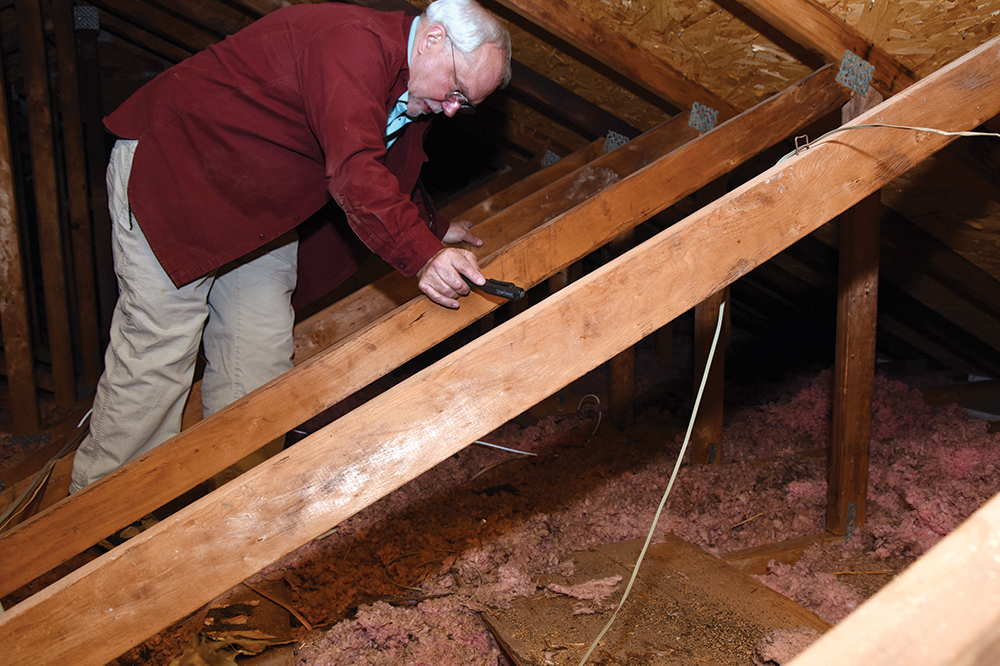By Pat Keegan and Brad Thiessen
Q:
I need to reduce my energy costs and don’t know where to start. You often recommend a home energy audit. What will an audit tell me?
A:
A home energy audit is the perfect place to start if you want to reduce your energy bills or make your home more comfortable. An audit can also help you decide whether to invest in a new energy source like a solar array, or a new heating and cooling system like a heat pump, or whether it’s time to upgrade your current system.

It’s possible to conduct your own energy audit using a website or app. Online and app audits are great tools you can use to learn about energy use and potential efficiency upgrades. A comprehensive, in-person energy audit provides much more information, but because most of us are staying at home and practicing social distancing, an online audit is currently the safest option.
Your electric cooperative might have some information about energy audits on their website. They might even have a tool to help you do your own energy audit. If not, there are other websites that will help you do your own energy audit. Just plug in “online energy audits” into a search engine.
Here are three sources of online information and online tools from sources that we trust:
- The U.S. Department of Energy has a nice tutorial about DIY energy audits at energy.gov/energysaver/ home-energy-audits/do-it-your- self-home-energy-audits
- The Lawrence Berkeley National Laboratory has an online audit at ho- meenergysaver.lbl.gov/consumer/
- ENERGY STAR provides a helpful tool, the Home Energy Yardstick. This tool helps you compare your energy use to similar homes, and provides guidance on how to reduce your energy use. energystar.gov/ index.cfm?fuseaction=home_ener- gy_yardstick.showgetstarted
When things are back to normal and it’s safe to have visitors in your home, there are typically two options for an in-home energy audit.
The least expensive is a home energy survey, sometimes referred to as a “walk-through” audit that is essentially a visual inspection. If you have modest goals about what you want to learn from an energy audit, and if you are fortunate enough to find an experienced and knowledgeable professional, this type of audit might meet your needs.
The second, more comprehensive energy audit requires more time and utilizes several diagnostic tools. The average cost for this type of audit is about $400. Check with your local electric cooperative to see if they offer energy audits or provide a discount or rebate.
A comprehensive energy audit will look at four main areas. The first is the envelope of your home, which includes
all the places where the exterior and in- terior meet––roof, walls, doors, windows and foundation. A critical tool for testing the envelope is a blower door test, which has a powerful fan that is mounted in an exterior door frame and used to de-pressurize the home. The auditor can then identify how well-sealed your home is and locate any air leaks. Some auditors will work with you to seal leaks and continue to take blower door readings as the home is tightened up. One advantage of this approach is avoiding excessive air sealing. It’s possible, in some homes, to tighten the home too much, so the energy auditor can determine when to stop sealing leaks so that a healthy supply of air infiltration is maintained.
Another tool auditors will use to look at your building envelope is a thermal imaging camera, which shows hot and cold spots that pinpoint exactly where insulation is needed on walls and ceilings. The camera works best when the exterior temperature is much colder or much warmer than the interior temperature.
The second focus of the audit is your home’s HVAC (furnace/AC unit) system and water heater to see how energy efficient they are and whether they should be
replaced. If your home has air ducts, the auditor can conduct a duct blaster test to see if your ducts are properly sealed. Ducts located in unheated areas are often a major source of energy loss.
The third area the auditor will review includes other energy end use, such as lighting, appliances and other “plugged-in” devices. The auditor may also suggest steps like energy efficient lighting or a smart thermostat.
The fourth area included in a comprehensive energy audit is health and safety. Does your home have the correct number and placement of smoke alarms and carbon monoxide detectors? Should your basement be tested for radon emissions? Make sure you get answers to these questions.
Some audits include a sophisticated en- ergy analysis of your home using energy modeling software. These analyses can rank the different energy efficiency opportunities in your home from most-to least cost-effective. This will tell you how much you can save if you invest in all the cost-effective upgrades.
After the energy audit is complete, the auditor should sit down with you and explain the findings in detail. This conversation should include a discussion of ways to operate your home to achieve more energy savings and more comfort.
A home energy audit may seem like an unnecessary expense, but it truly can save you money in the long run because it helps to ensure every dollar you put into energy efficiency pays for itself.
This column was co-written by Pat Keegan and Brad Thiessen of Collaborative Effi- ciency. For more information on choosing windows, please visit: www.collabora- tiveefficiency.com/energytips.




